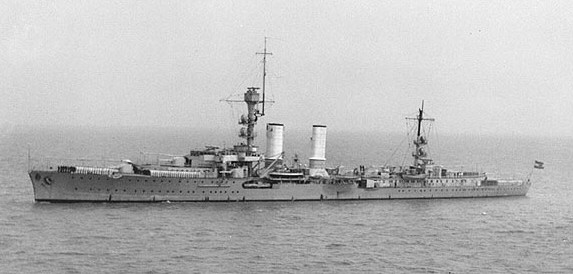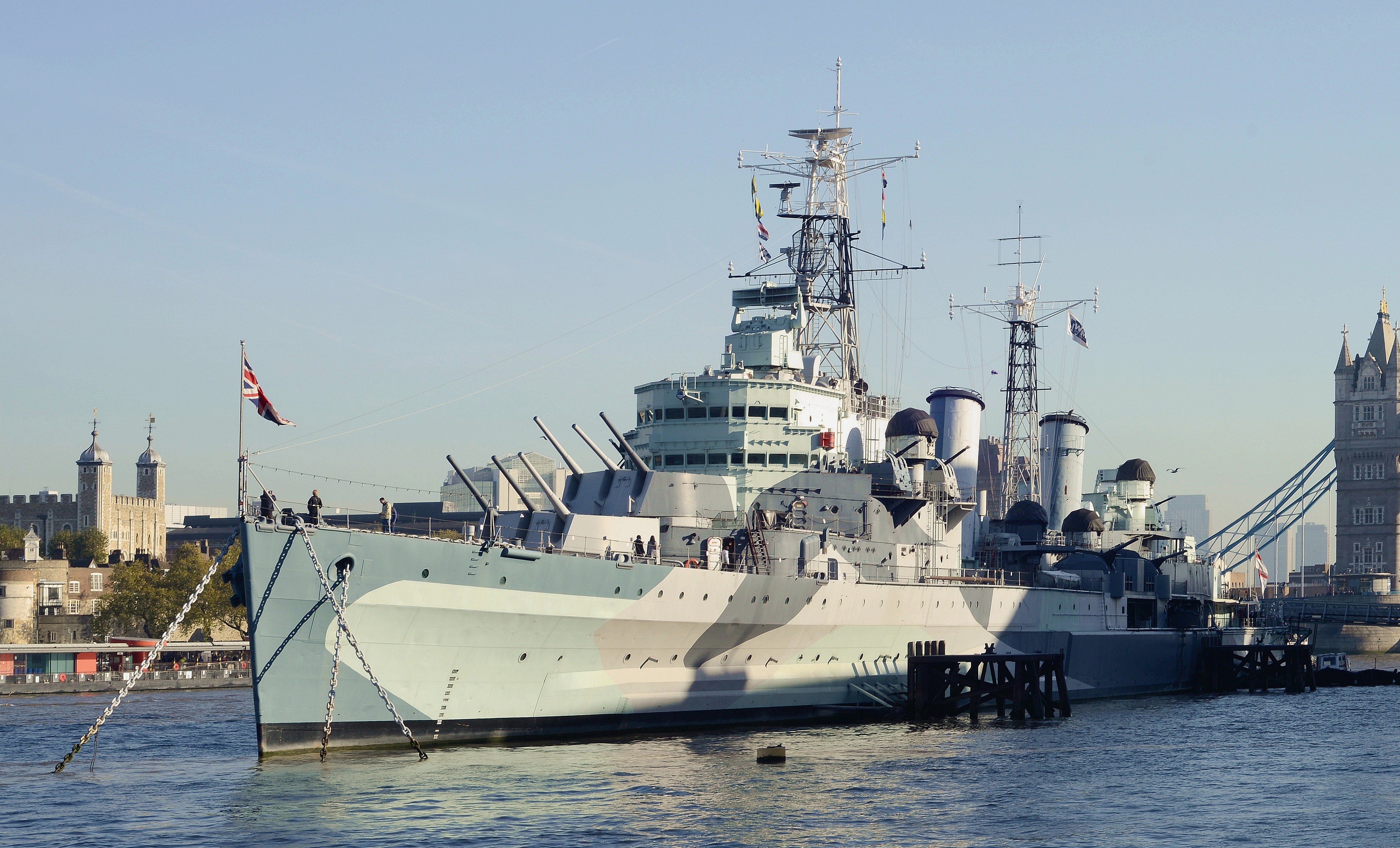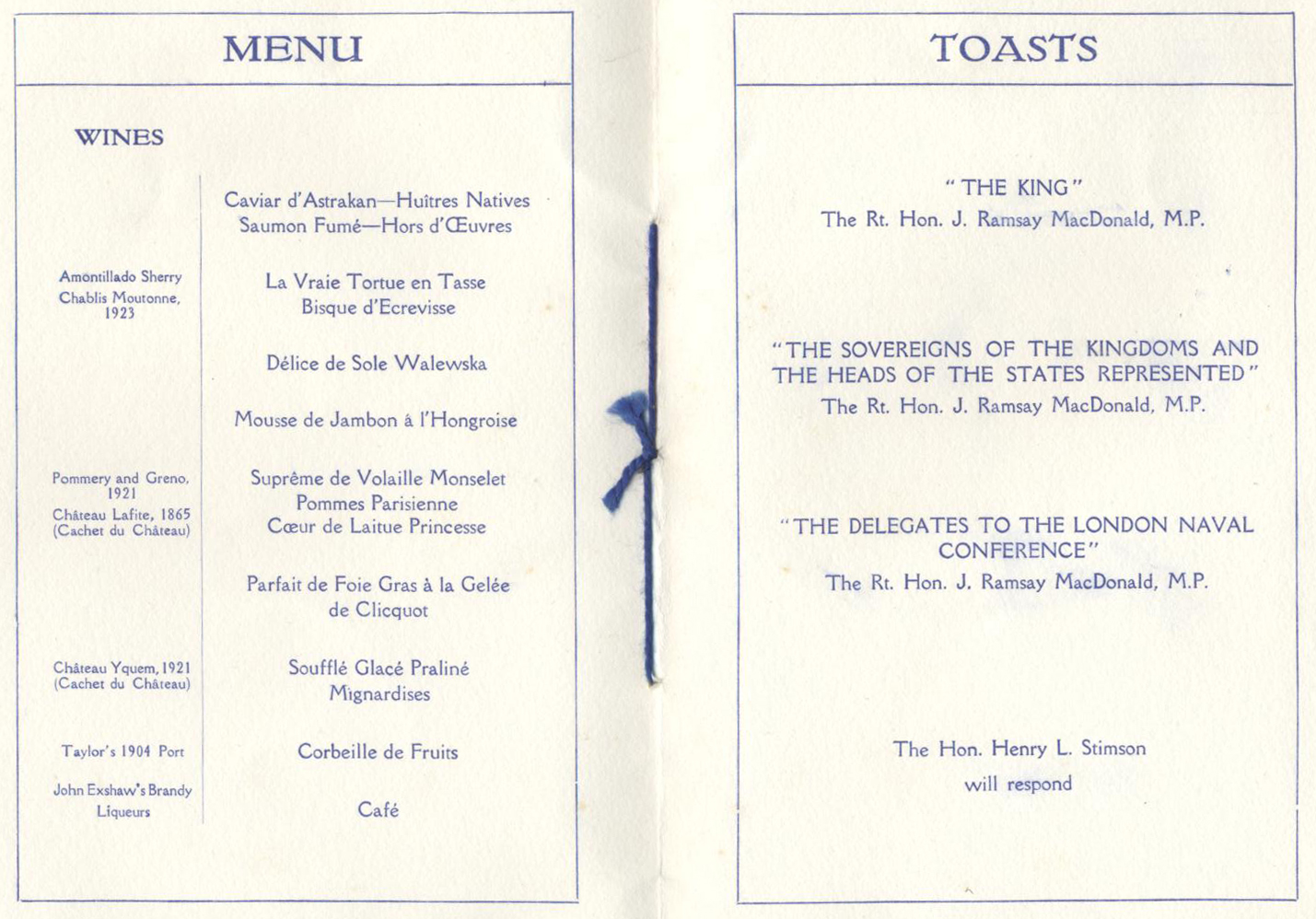|
Plan Z
Plan Z was the re-equipment and expansion of the ''Kriegsmarine'' (German navy) ordered by Adolf Hitler in early 1939. The fleet was meant to challenge the naval power of the United Kingdom, and was to be completed by 1948. Development of the plan began in 1938, but it reflected the evolution of the strategic thinking of the '' Oberkommando der Marine'' (Naval High Command) over the two decades following World War I. The plan called for a fleet centered on ten battleships and four aircraft carriers which were intended to battle the Royal Navy. This force would be supplemented with numerous long-range cruisers that would attack British shipping. A relatively small force of U-boats was also stipulated. When World War II broke out in September 1939, almost no work had been done on the new ships ordered under Plan Z. The need to shift manufacturing capacity to more pressing requirements forced the ''Kriegsmarine'' to abandon the construction program, and only a handful of major ships&m ... [...More Info...] [...Related Items...] OR: [Wikipedia] [Google] [Baidu] |
Kriegsmarine
The (, ) was the navy of Nazi Germany from 1935 to 1945. It superseded the Imperial German Navy of the German Empire (1871–1918) and the inter-war (1919–1935) of the Weimar Republic. The was one of three official military branch, branches, along with the and the , of the , the German armed forces from 1935 to 1945. In violation of the Treaty of Versailles, the grew rapidly during German rearmament, German naval rearmament in the 1930s. The 1919 treaty had limited the size of the German navy and prohibited the building of submarines. ships were deployed to the waters around Spain during the Spanish Civil War (1936–1939) under the guise of enforcing non-intervention in the Spanish Civil War, non-intervention, but in reality supporting the Francoist Spain, Nationalists against the Second Spanish Republic, Spanish Republicans. In January 1939, Plan Z, a massive shipbuilding programme, was ordered, calling for surface naval parity with the United Kingdom, British Royal ... [...More Info...] [...Related Items...] OR: [Wikipedia] [Google] [Baidu] |
Light Cruiser
A light cruiser is a type of small or medium-sized warship. The term is a shortening of the phrase "light armored cruiser", describing a small ship that carried armor in the same way as an armored cruiser: a protective belt and deck. Prior to this smaller cruisers had been of the protected cruiser model, possessing armored decks only. While lighter and smaller than other contemporary ships they were still true cruisers, retaining the extended radius of action and self-sufficiency to act independently around the world. Cruisers mounting larger guns and heavier armor relative to most light cruisers would come to be known as heavy cruisers, though the designation of 'light' versus 'heavy' cruisers would vary somewhat between navies. Through their history light cruisers served in a variety of roles, primarily on long-range detached patrol work, covering other military operations or global shipping lanes, as scouts and fleet support vessels for battle fleets, as destroyer command ship ... [...More Info...] [...Related Items...] OR: [Wikipedia] [Google] [Baidu] |
Reichstag (Weimar Republic)
The Reichstag of the Weimar Republic (1919–1933) was the lower house of Germany's parliament; the upper house was the Reichsrat (Germany), Reichsrat, which represented the states. The Reichstag convened for the first time on 24 June 1920, taking over from the Weimar National Assembly, which had served as an interim parliament following the collapse of the German Empire in November 1918. Under the Weimar Constitution of 1919, the Reichstag was elected every four years by universal, equal, secret and direct suffrage, using a system of party-list proportional representation. All citizens who had reached the age of 20 were allowed to vote, including women for the first time, but excluding soldiers on active duty. The Reichstag voted on the laws of the Reich and was responsible for the budget, questions of war and peace, and confirmation of state treaties. Oversight of the Reich government (the ministers responsible for executing the laws) also resided with the Reichstag. It could f ... [...More Info...] [...Related Items...] OR: [Wikipedia] [Google] [Baidu] |
London Naval Treaty
The London Naval Treaty, officially the Treaty for the Limitation and Reduction of Naval Armament, was an agreement between the United Kingdom, Empire of Japan, Japan, French Third Republic, France, Kingdom of Italy, Italy, and the United States that was signed on 22 April 1930. Seeking to address issues not covered in the 1922 Washington Naval Treaty, which had created tonnage limits for each nation's Surface combatant, surface warships, the new agreement regulated submarine warfare, further controlled cruisers and destroyers, and limited naval shipbuilding. Ratifications were exchanged in London on 27 October 1930, and the treaty went into effect on the same day, but it was largely ineffective. The treaty was registered in ''Treaty series#League of Nations, League of Nations Treaty Series'' on 6 February 1931. Conference The signing of the treaty remains inextricably intertwined with the ongoing negotiations, which began before the official start of the London Naval Confer ... [...More Info...] [...Related Items...] OR: [Wikipedia] [Google] [Baidu] |
Washington Naval Treaty
The Washington Naval Treaty, also known as the Five-Power Treaty, was signed during 1922 among the major Allies of World War I, Allies of World War I, which agreed to prevent an arms race by limiting Navy, naval construction. It was negotiated at the Washington Naval Conference in Washington, D.C. from November 1921 to February 1922 and signed by the governments of the British Empire (including the United Kingdom, Canada, Australia, New Zealand, South Africa and India), United States, French Third Republic, France, Kingdom of Italy, Italy, and Empire of Japan, Japan. It limited the construction of battleships, battlecruisers and aircraft carriers by the signatories. The numbers of other categories of warships, including cruisers, destroyers, and submarines, were not limited by the treaty, but those ships were limited to 10,000 tons displacement (ship), displacement each. The treaty was finalized on February 6, 1922. Ratifications of it were exchanged in Washington on August 17, 1 ... [...More Info...] [...Related Items...] OR: [Wikipedia] [Google] [Baidu] |
Heavy Cruiser
A heavy cruiser was a type of cruiser, a naval warship designed for long range and high speed, armed generally with naval guns of roughly 203 mm (8 inches) in calibre, whose design parameters were dictated by the Washington Naval Treaty of 1922 and the London Naval Treaty of 1930. Heavy cruisers were generally larger, more heavily armed and more heavily armoured than light cruisers while being smaller, faster, and more lightly armed and armoured than battlecruisers and battleships. Heavy cruisers were not considered capital ships, unlike battlecruisers, battleships, and fleet carriers. Heavy cruisers were assigned a variety of roles ranging from commerce raiding to serving as 'cruiser-killers,' i.e. hunting and destroying similarly sized ships. The heavy cruiser is part of a lineage of ship design from 1915 through the early 1950s, although the term "heavy cruiser" only came into formal use in 1930. The heavy cruiser's immediate precursors were the light cruiser design ... [...More Info...] [...Related Items...] OR: [Wikipedia] [Google] [Baidu] |
Panzerschiff
The class was a series of three (armored ships), a form of heavily armed cruiser, built by the officially in accordance with restrictions imposed by the Treaty of Versailles. The ships of the class, , , and , were all stated to displace in accordance with the Treaty, though they actually displaced at standard displacement. The design for the ships incorporated several radical innovations, including the first major use of welding in a warship and all-Diesel engine, diesel propulsion. Due to their heavy armament of six guns and lighter weight, the British began referring to the vessels as "pocket battleships". The -class ships were initially classified as , but the reclassified them as heavy cruisers in February 1940. The three ships were built between 1929 and 1936 by the Deutsche Werke in Kiel and the in Wilhelmshaven, seeing much service with the German Navy. All three vessels served on Non-intervention in the Spanish Civil War, non-intervention patrols during the Spanis ... [...More Info...] [...Related Items...] OR: [Wikipedia] [Google] [Baidu] |
Displacement (ship)
The displacement or displacement tonnage of a ship is its weight. As the term indicates, it is measured indirectly, using Archimedes' principle, by first calculating the volume of water displaced by the ship, then converting that value into weight. Traditionally, various measurement rules have been in use, giving various measures in long tons. Today, tonnes are more commonly used. Ship displacement varies by a vessel's degree of load, from its empty weight as designed (known as "lightweight tonnage") to its maximum load. Numerous specific terms are used to describe varying levels of load and trim, detailed below. Ship displacement should not be confused with measurements of volume or capacity typically used for commercial vessels and measured by tonnage: net tonnage and gross tonnage. Calculation The process of determining a vessel's displacement begins with measuring its draft.George, 2005. p. 5. This is accomplished by means of its "draft marks". A merchant vessel has t ... [...More Info...] [...Related Items...] OR: [Wikipedia] [Google] [Baidu] |
German Type II Submarine
The Type II U-boat was designed by Nazi Germany as a coastal U-boat, modeled after the CV-707 submarine, which was designed by the Dutch front company NV Ingenieurskantoor voor Scheepsbouw Den Haag (I.v.S) (set up by Germany after World War I in order to maintain and develop German submarine technology and to circumvent the limitations set by the Treaty of Versailles) and built in 1933 by the Finnish Crichton-Vulcan shipyard in Turku, Finland. It was too small to undertake sustained operations far away from the home support facilities. Its primary role was found to be in the training schools, preparing new German naval officers for command. It appeared in four sub-types. Background Germany was stripped of its U-boats by the Treaty of Versailles at the end of World War I, but in the late 1920s and early 1930s began to rebuild its armed forces. The pace of rearmament accelerated under Adolf Hitler, and the first Type II U-boat was laid down on 11 February 1935. Knowing that the ... [...More Info...] [...Related Items...] OR: [Wikipedia] [Google] [Baidu] |
German Type I Submarine
The Type I U-boat was the first post–World War I attempt to produce an oceangoing submarine for Nazi Germany's ''Kriegsmarine''. The type was based on the TCG Gür (1936), Spanish Type E-1 and Finnish Finnish submarine Vesikko, CV707, which were both designed by Ingenieurskantoor voor Scheepsbouw.Rössler (2001), pp. 98-99. Only two Type IAs were built.Showell (2006), p. 73. They were not a successful design : due to its single rudder they had a large turning circle and were not very manoeuvrable. The gravity center of the U-boat was too forward so on the surface the type I had its propellers exposed when she was pitching. Whilst submerged there were problems with depth keeping and stability as air bubbles in the fuel tanks wobbled back and forth. Diving was very slow: at full speed and with six tons of negative buoyancy it took forty seconds to reach ten metres depth. As a result, the type was discontinued and the new Type IX submarine, type IX class of ocean-going U-boats was ... [...More Info...] [...Related Items...] OR: [Wikipedia] [Google] [Baidu] |
Treaty Of Versailles/Part V
A treaty is a formal, legally binding written agreement between sovereign states and/or international organizations that is governed by international law. A treaty may also be known as an international agreement, protocol, covenant, convention, pact, or exchange of letters, among other terms; however, only documents that are legally binding on the parties are considered treaties under international law. Treaties may be bilateral (between two countries) or multilateral (involving more than two countries). Treaties are among the earliest manifestations of international relations; the first known example is a border agreement between the Sumerian city-states of Lagash and Umma around 3100 BC. International agreements were used in some form by most major civilizations and became increasingly common and more sophisticated during the early modern era. The early 19th century saw developments in diplomacy, foreign policy, and international law reflected by the widespread use of treat ... [...More Info...] [...Related Items...] OR: [Wikipedia] [Google] [Baidu] |
NV Ingenieurskantoor Voor Scheepsbouw
(Dutch: engineer-office for shipbuilding), usually contracted to IvS or Inkavos, was a Dutch dummy company set up in The Hague and funded by the after World War I in order to maintain and develop German submarine know-how and to circumvent the limitations set by the Treaty of Versailles. The company designed several submarine types for paying countries, including the Soviet S-class submarine, as well as the prototypes for the German Type II submarines and Type VII submarines. The company was a joint venture by the German shipyards AG Vulcan Stettin (located in Stettin and Hamburg), the Krupp-owned Germaniawerft in Kiel, and AG Weser in Bremen. Design work was carried out at the facilities of these companies in Germany. Background information At the time of IvS, the Germans were bound by the Treaty of Versailles, signed in 1919. This treaty, among other terms, demanded that all German U-boats be destroyed or given to other nations. Thus the ''Reichsmarine'' was left witho ... [...More Info...] [...Related Items...] OR: [Wikipedia] [Google] [Baidu] |









